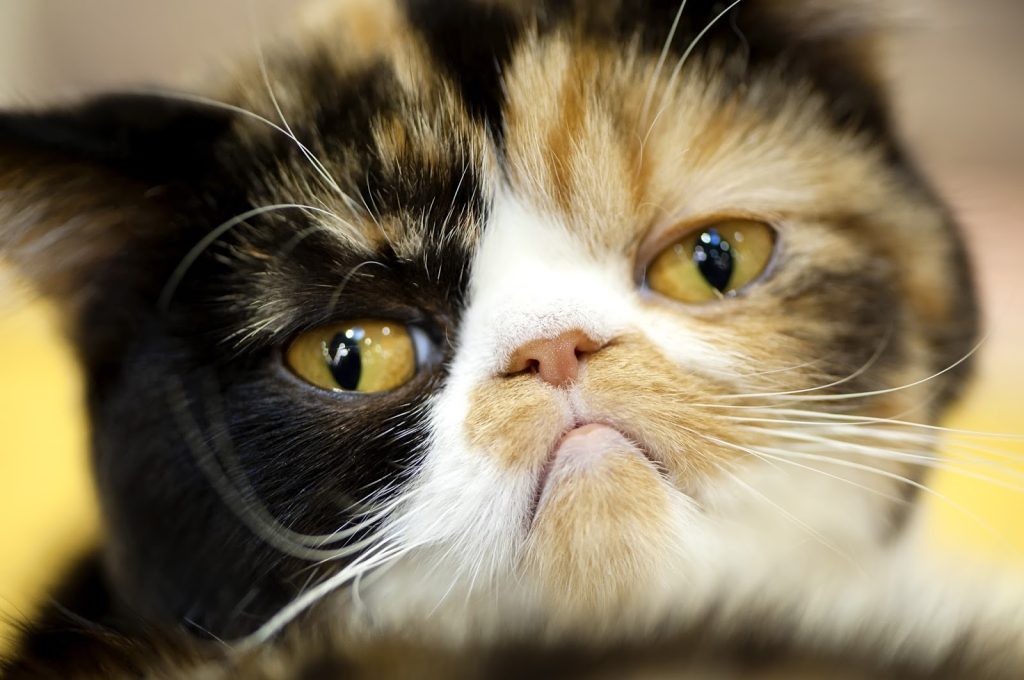How positive training can change unwanted behaviors in cats

Understanding the Benefits of Positive Training for Felines
Unwanted behaviors in cats can create significant challenges for pet owners, often leading to frustration and stress within the household. Common issues such as scratching furniture or excessive vocalization can erode the joy of cat ownership and even jeopardize relationships between cats and their families. Fortunately, positive training techniques offer a compassionate and effective pathway to transforming these behaviors.
This training method is rooted in the concept of positive reinforcement, which involves rewarding desirable actions to encourage their repetition. For example, if a cat stops scratching the furniture and instead uses a scratching post, immediately rewarding it with a treat or affection reinforces this positive behavior. This not only helps the cat learn what is expected but also strengthens the bond between pet and owner through shared positive experiences.
The Core Principles of Positive Training
Understanding the fundamental principles of positive training can greatly enhance your effectiveness as a cat parent:
- Positive Reinforcement: Offering treats, toys, or praise when your cat performs a desirable action increases the likelihood that the behavior will be repeated in the future.
- Consistency: Use the same commands, treats, and even tones of voice to help your cat learn expectations. For instance, consistently calling your cat’s name followed by a command like “come” in a friendly tone will help them make positive associations with that behavior.
- Patience: Recognize that each cat is unique, and learning speeds will vary. Some cats may catch on quickly, while others may need more time to grasp the concepts.
Identifying Underlying Causes
It’s important to note that many disruptive behaviors can be a result of underlying issues such as boredom, anxiety, or even physical health problems. For instance, a cat that consistently meows excessively may be seeking attention due to separation anxiety or might be trying to communicate a health concern. By employing a structured approach to training, you can:
- Reduce Stress: A less anxious cat is more likely to engage in pleasant behaviors. Implementing techniques that promote calmness can improve your cat’s overall well-being.
- Encourage Engagement: Playtime doesn’t just entertain; it enriches your cat’s environment. Consider introducing interactive toys or scheduled play sessions that challenge your feline’s hunting instincts.
- Foster Communication: Building a trusting relationship with your cat enhances mutual understanding, allowing for more effective communication between the two of you.
In the following sections, we will delve deeper into specific methods of positive training and the psychological principles that make them effective. Understanding these strategies will empower you to cultivate a more harmonious living space for both you and your beloved feline friend, fostering a partnership built on trust and respect.

DISCOVER MORE: Click here to learn why socialization is essential for your pets
Effective Strategies for Implementing Positive Training
To successfully address and transform unwanted behaviors in cats, it’s essential to incorporate effective strategies that leverage the principles of positive training. These methodologies not only provide immediate solutions but also contribute to the long-term happiness of both cats and their owners. By employing specific techniques, pet owners can witness remarkable changes in their feline companions’ behavior.
Creating an Environment for Success
Before embarking on the journey of positive training, it’s crucial to create an environment that promotes positive behavior. This can be achieved through:
- Designating Safe Spaces: Cats are territorial creatures, and having their own designated areas where they can retreat to feel safe can alleviate anxiety. Consider purchasing a cozy cat bed or setting up a quiet nook with familiar scents.
- Utilizing Vertical Spaces: High perches or cat trees allow cats to explore their natural instincts. This not only entertains them but can also reduce the likelihood of unwanted behaviors like scratching furniture due to boredom.
- Providing Enrichment: Interactive toys, puzzle feeders, and even catnip can engage your feline mentally and physically. The more stimulated they are, the less likely they are to engage in disruptive behaviors.
Implementing Training Techniques
Once you’ve set the stage, implementing training techniques is the next crucial step. Here are some methods that are particularly effective:
- Clicker Training: This popular method uses a clicker to mark desired behaviors instantly. When your cat performs the desired behavior, such as using the litter box, click the device and follow it with a reward. Over time, your cat will associate the click sound with positive outcomes.
- Gradual Desensitization: For behaviors stemming from anxiety, gradually introducing your cat to the source of their fear—whether it be loud noises or new environments—can help them become more accustomed and lessen their anxious responses.
- Redirecting Negative Behaviors: Instead of reprimanding your cat for unwanted behaviors like excessive meowing or clawing, navigate their attention to a more suitable outlet. For instance, if your cat starts to scratch the sofa, gently lead them to their scratching post. Celebrating their choice with treats or affection is key.
The implementation of these techniques does not only target behavioral issues but also fosters a loving and respectful bond. Engaging with your cat through positive reinforcement leads to an increased understanding of their needs, subsequently enhancing your relationship. As this partnership matures, both you and your feline companion can enjoy a fulfilling life together, free from the strain of unwanted behaviors.
As we explore further into the benefits and scientific backing of positive training, it becomes clear that understanding feline behavior is vital for implementing these effective techniques. The journey to a harmonious relationship with your cat empowers owners to take on the responsibilities of their care with confidence, ultimately leading to a more enjoyable coexistence.
| Category | Description |
|---|---|
| Behavioral Improvement | Positive training encourages desired behaviors through rewards, thus significantly reducing problematic actions. |
| Strengthening Bond | Engaging in positive training fosters a deeper connection between pet and owner, making interactions more fulfilling and trustworthy. |
In the realm of feline behavior management, the importance of positive reinforcement cannot be understated. This method not only serves to discourage unwanted habits but also actively encourages preferred behaviors. For instance, rather than scolding a cat for scratching furniture, rewarding them for using a scratching post successfully alters their focus. This training principle hinges on the belief that behavior that leads to rewarding outcomes is more likely to recur.Additionally, the emphasis on engagement during training activities enhances the relationship between owner and cat. Utilizing treats, praise, and playtime as rewards not only motivates the feline but also results in an increase in affection and trust. This means that the more harmonious the relationship, the less likely it is for negative behaviors to develop in the first place. Understanding the psychological effects of training can lead to comprehensive strategies that benefit both parties, paving the way to a happier household environment.
DIVE DEEPER: Click here to discover the importance of positive training
Understanding Feline Behavior: The Science Behind Positive Training
To effectively apply positive training techniques, it’s essential to delve into the underlying science of feline behavior. Understanding how cats perceive their surroundings and how they respond to various stimuli can significantly enhance the efficacy of training methods. Cats, unlike dogs, exhibit a different kind of social structure and cognitive process; they rely heavily on their instincts and environmental cues.
The Role of Motivation
Central to positive training is the concept of motivation. Understanding what drives your cat can lead to better training outcomes. While some cats may be motivated by food, others may respond more favorably to playtime or affection. Observing your cat and discovering their preferred motivators is crucial in shaping their behavior. For instance, if treats are a primary motivator, using high-palatability rewards can speed up the learning process.
Research indicates that positive reinforcement can significantly influence a cat’s willingness to engage in desired behavior. According to a study published in the Journal of Feline Medicine and Surgery, cats subjected to positive reinforcement training exhibited improved learning outcomes compared to those that faced aversive training methods. Builders of trust over time can help cats overcome anxiety-driven unwanted behaviors.
The Importance of Timing in Training
The timing of reinforcement is another pivotal component in training. Immediate rewards following a desired behavior can create a clear connection for the cat between their actions and the positive outcome. For example, when introducing a new scratching post, if your cat uses it and receives their treat immediately afterward, they will learn to associate the post with receiving rewards. This timing helps solidify the behavior in their memory.
Utilizing Cats’ Natural Behaviors
Furthermore, leveraging natural feline behaviors can produce an effective training environment. Cats often engage in activities such as climbing, scratching, and hunting. By incorporating these instincts into training routines, pet owners can redirect unwanted behaviors toward more acceptable outlets. If your cat is climbing your curtains, preemptively providing them with vertical spaces, like a wall-mounted cat shelf, can satisfy that instinct and simultaneously protect your household items.
Additionally, environmental modifications such as using pheromone diffusers can alleviate stress, leading to more effective training. Stress is frequently a precursor to unwanted behaviors; creating a calming atmosphere fosters an environment where your cat is more likely to respond positively to training efforts.
Fostering a Strong Human-Cat Bond
Positive training also plays a crucial role in strengthening the human-cat bond. Engaging in training sessions enhances interaction quality, allowing owners to observe their cat’s preferences and behaviors closely. This shared experience promotes trust, making the cat more receptive to leadership. A study conducted by the American Animal Hospital Association reveals that cats who are engaged with their owners through training exhibit fewer behavioral problems overall.
Ultimately, understanding the motivations, instincts, and emotional well-being of cats propels the journey of positive training forward. By embracing these elements, pet owners can foster meaningful connections with their feline companions while effectively mitigating unwanted behaviors. With a proactive approach and a wealth of knowledge at your disposal, the possibilities for enhancing your cat’s behavior through positive training are limitless.
LEARN MORE: Click here for essential pet health tips
Conclusion: Transforming Cat Behavior Through Positive Training
In conclusion, positive training emerges as an invaluable tool for pet owners looking to transform unwanted behaviors in cats. By comprehensively understanding feline instincts and motivation, individuals can tailor their training approaches to align with their cats’ unique needs. Engaging in positive reinforcement not only fosters cooperation but also builds a deeper emotional connection between owner and pet.
The significance of timing and environmental adjustments cannot be overstated; these elements create a conducive atmosphere for learning. When owners take the time to recognize and reward good behavior—whether through treats, play, or affection—they enable their cats to associate actions with positive experiences, reinforcing desirable behaviors over time.
Moreover, by leveraging natural feline tendencies, such as climbing and scratching, owners can redirect unwanted actions into more acceptable ones, all while fulfilling their cats’ intrinsic needs. This proactive approach, combined with patience and consistent effort, can significantly improve a cat’s well-being, mitigating anxiety-driven issues, and fostering a harmonious home environment.
Ultimately, investing in the journey of positive training opens the door to a rewarding relationship filled with trust and understanding. As countless pet owners have discovered, the implementation of positive training strategies leads to profound changes in not only a cat’s behavior but also the overall dynamic within the household. For those with feline friends, the exploration of positive training approaches offers an exciting opportunity to enhance their lives together and to enjoy a fulfilling companionship.



